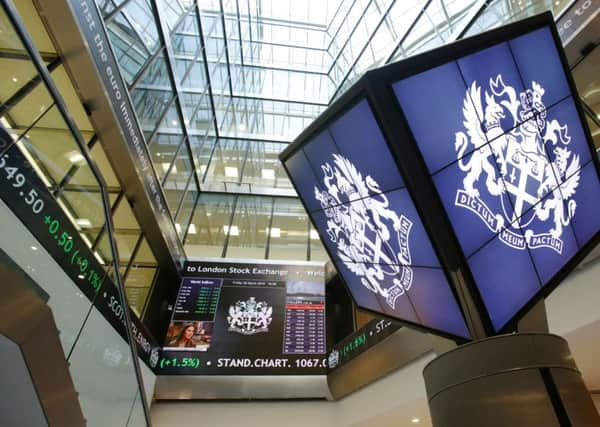Motley Fool: The dangers of being an investing magpie


And individual UK investors — you and me, in other words — hold an estimated 12% of that £1.7 trillion, via direct holdings in listed companies, either through ISAs or individual brokerage accounts.
Which, to put it bluntly, is quite a lot of money. And the total is even greater, of course, when you throw in the money that we’ve also invested in unit trusts, investment trusts and other pooled investment products.
But how well is all that wealth managed?
Advertisement
Hide AdAdvertisement
Hide AdStatistics are hard to come by, but American researchers Brad Barber and Terry Odean provide a clue. Analysing the trading records of 10,000 brokerage accounts of individual investors over a sevenyear period, they came to a sobering conclusion.
On average, investors failed to beat the market. And those investors who traded the most, it transpired, did even worse, earning an annual return of 11.4%, in a period in which the market returned 17.9%.
Nobel prizewinner Daniel Kahneman summed it up well in his recent best-sellerThinking, Fast and Slow.
“On average, the shares that individual traders sold did better than those they bought, by a very substantial margin: 3.2 percentage points per year, above and beyond the significant costs of executing the trades... It is clear that for the large majority of individual investors, taking a shower and doing nothing would have been a better policy than implementing the ideas that came to their minds.”
Advertisement
Hide AdAdvertisement
Hide AdAs I say, sobering stuff. Particularly when I dip into our discussion boards, and see investors’ knee-jerk reactions to price falls, profit warnings and the like.
In short, shares that they ought to be considering buying — because the price has gone down — they are instead intent on selling, because, er, the price has gone down.
Strategy, not tactics
Now, despite this, investors aren’t idiots. Most of us have had to work hard to earn the money that we’ve invested in the stock market.
What’s lacking isn’t brain power, but a strategy. We’re investing magpies, in short, picking up nice shiny shares, and dropping them when the allure dulls.
Advertisement
Hide AdAdvertisement
Hide AdInstead of which, we should be carefully thinking about what sort of shares we want to buy — and why — and then go looking for them.
Not reacting slavishly to the latest newspaper tip, privatisation, fund launch or IPO that we come across.
Growth, income, or something else?
The mistake that many novice investors make is to think that there’s only one investment strategy: to buy shares that go up.
But while gunning for gung-ho capital growth is a laudable aspiration, it’s not the only strategy.
Advertisement
Hide AdAdvertisement
Hide AdIt doesn’t take too much effort, for instance, to see several alternatives:
- Buying shares for a dividend income
- Buying shares for long-term wealth preservation
- Buying shares that will minimise inheritance tax liabilities
- Buying shares for short-term trading gains
And even the simple strategy of ‘buying shares that will go up’ has multiple nuances. Because if that was the only criteria, a moment’s thought will make it clear that London’s FTSE 100, FTSE 250 and AIM markets have very, very different risk-reward profiles.
Put another way, and thinking of legendary investor Jim Slater’s oft-quoted remark that “elephants don’t gallop”, it’s clear that the FTSE 100 contains precisely those elephants. The FTSE 250, meanwhile, has a good mix of racehorses and carthorses, while AIM has more than a few gazelles — but gazelles with a regrettable tendency, in some cases, to step on landmines.
So what to do?
Advertisement
Hide AdAdvertisement
Hide AdSo the starting point is to have a strategy. In other words, decide what sort of investor you’re going to be, and what sort of shares you’ll buy.
Immediately, that will eliminate a lot of this knee-jerk reaction, as you’ll view your buying — and selling — decisions in a very different light.
It’s no coincidence, I believe, that top-performing fund investment manager Nick Train — dubbed ‘Mr Buy-and-Hold’ — is famous for, er, buying and holding.
Indeed, this summer it was reported that he’d just bought his first share since 2012.
Can’t decide on a strategy?
Advertisement
Hide AdAdvertisement
Hide AdIf you’re truly paralysed by indecision, buy an index tracker. Or steel yourself for the fees levied by fund managers — they’ll have a strategy, and relieve you of the chore of following it yourself.
But for most investors, it really isn’t too difficult. Income investing, or capital growth? Your age, and your need for income, will largely answer that one.
High risk, medium risk, or lower risk? That will dictate the pools you go fishing in, and the weightings that you’ll attach to such things as debt, gearing and price-to-earnings ratios.
And me? What’s my strategy? That’s easy: nice, boring, higher-yielding FTSE 100 stocks, for the most part.